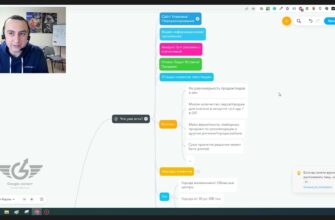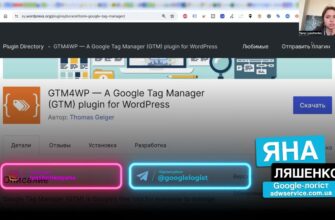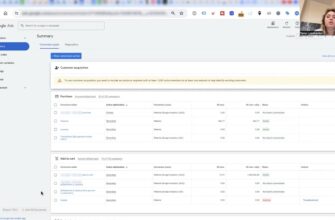- What factors influence seasonality in contextual advertising?
- What tools are used to calculate seasonality in Google Ads?
- How to adapt contextual advertising based on seasonality?
- How do I advertise seasonal products in Google AdWords?
- What is the impact of seasonality on the PPC budget?
- Notification “Limited by budget”
- The percentage of received impressions has decreased
- How to work with advertising campaign rates in high season?
The phenomenon of seasonality is due to the cyclical impact of one or more factors on the demand for a product among buyers in different periods of time.
Seasonality to one degree or another exists in any business area. The need for the product at a certain point decreases, and then the season is called low. When there is an increase in demand, they talk about the high season. With regard to Internet marketing, it should be remembered that during the period of high seasonality in contextual advertising, competition increases. The consequence of this is an increase in the cost of a click.
In some areas, seasonality is easy to predict: beach products are in demand in summer, skis and skates in winter. For flower business owners, the hot time comes on Knowledge Day, March 8th and Valentine’s Day.
How many calls and sales will I get by ordering contextual advertising from you?
I need to calculate the conversion of my website Describe
the task
in the application
Calculate potential ad revenue Google
contextual advertising calculator
There are also areas of entrepreneurship that are not so obvious from the point of view of binding to holidays or seasons of the year: masseurs or lawyers, sellers of dishes or bed linen. Nevertheless, in these areas, time intervals of increase and decrease in demand can be distinguished.
This article will help you figure out how to determine the seasonality in your niche and what needs to be done to make the use of contextual advertising productive and help increase sales both during periods of high demand and during its decline.
What factors influence seasonality in contextual advertising?
When planning an advertising campaign, you should take into account the influence of seasonality on contextual advertising, the main factors of which are:
- The season. For example, warm jackets are much less frequently bought in summer than in winter;
- Weather. In summer, the demand for open light shoes falls on cold and rainy days;
- Holiday dates. A few days before the holidays, interest in goods that can be presented as a gift increases;
- Consumer activity. The period of holidays, long holidays and holidays is the high season, for example, for the tourism industry;
- Annual events and one-time events. Interest in some products may increase during concerts or festivals, the opening of shopping or entertainment centers.
What tools are used to calculate seasonality in Google Ads?
If seasonality in your area of business is not so obvious, then you can identify periods of increase or decrease in demand using the following tools:
- Google Analytics – if the business has been running for some time, then using the website traffic report, you can determine the periods of high and low season;
- Keyword Planner – the tool allows you to evaluate the seasonality of a particular query;
- Google Trends – also helps to check search queries for PPC seasonality.
To identify seasonality in Google Ads contextual advertising, you will need data grouped by months for a couple of years.
For example, a graph illustrating the trend in the number of requests for sunglasses will show a clear surge in interest during the summer months.

The traffic curve of an online bicycle shop tends to rise in April, but changes direction with the beginning of autumn. And it is in winter that this product is least in demand.
Seasonal data can be influenced by external factors, making some adjustments from year to year. Reasons for deviations from a long-term trend may be natural social and cultural changes that occur with a change in generations of consumers, or the emergence of new competitors. For example, in 2020, the widespread introduction of quarantines due to the Covid-19 pandemic caused a shift in seasonality curves. Earlier demand for home exercise equipment:
- Declined with the beginning of the summer holidays and the emergence of the opportunity to train in the fresh air;
- Growed in autumn, when weather conditions became unfavorable for outdoor sports.
But in 2020, the demand for exercise equipment did not fall in the spring. On the contrary, there was an increase in requests for sports equipment.
How to adapt contextual advertising based on seasonality?
Seasonal drawdown in traffic is an unpleasant phenomenon, but with the right approach, it can become a reason to use new marketing opportunities.
Important! The Display Network is generally considered as a tool for working with awareness. But to even out seasonal fluctuations, it can be turned into a source of full-fledged commercial traffic.
Accounting for seasonality in contextual advertising allows you to find non-standard ways to use your product, as well as bonuses that can interest the audience. Create new display ads and invest in this tool during times of low demand.
How do I advertise seasonal products in Google AdWords?
The most controversial question is when to advertise highly seasonal products such as skates or swimwear.
It all depends on the business area. For example, even in summer, users are looking for information about warm jackets. And this does not mean that the demand for this piece of clothing is the same in winter and summer. Many of these requests are not commercial.
Even for keywords containing “buy”, some consumers may just be looking for models and brands. But there are those who really want to buy a product, though at a big discount. Two questions follow from this:
How many calls and sales will I get by ordering contextual advertising from you?
I need to calculate the conversion of my website Describe
the task
in the application
Calculate potential ad revenue Google
contextual advertising calculator
- Is your offer for jackets in the summer months attractive enough for those looking to save money?
- Among your potential audience are there those who buy things on sale?
If your online store sells various items of clothing – from swimwear to jackets, and in the summer you do not offer discounts for winter clothes, switching to the sale of summer product groups, then advertising for jackets will not be effective. Customers will not buy a winter jacket in the summer for 100% of its value.
If you sell high-end expensive clothes, there is a chance that prices will still remain high for such an audience, even taking into account the discount, and the conversion will still remain low.
How to solve the problem? You should understand what queries are popular in the low season, and evaluate the purpose for which the audience is looking for this or that information. If the goal has a commercial context, then the conditions required for the conversion to occur must be determined. If you have the opportunity to meet these conditions, then you can continue the advertising campaign, while making some adjustments:
- Reducing rates – some companies stop showings out of season, which weakens competition, i.e. you can advertise cheaper;
- Reducing the overall budget for the reasons described in the previous paragraph;
- Ad Adjustment – The message must meet the needs of the potential buyer and demonstrate its benefit, i.e. motivate to make a deal right now.
An example is adjusting the titles of ads promoting jackets to include information about summer discounts on last season’s collection.
Advice! Activities should become more active as the high season approaches. Many products are searched weeks or even months before they are really needed.
For e-commerce, plan seasonal marketing activities at least a quarter in advance to ensure:
- Sufficient preparation time;
- The ability to get ahead of competitors in launching or updating an advertising campaign;
- High probability of attracting those consumers who start their search in advance.
The situation is identical with other product groups.
Seasonality in Google AdWords contextual advertising can be useful for reminding the audience about holidays and events that require the purchase of gifts. Commercial traffic sources such as Display Networks in Google Ads help to focus the attention of the consumer on the product long before the actual need for it arises. Here you should act proactively.
What is the impact of seasonality on the PPC budget?
Attention! With an increase in demand for a product, the number of requests in the relevant topic increases, which logically leads to an increase in the number of clicks, and, consequently, advertising costs.
Given the influence of seasonality on the budget of an advertising campaign, the difference between the optimal budget and rates in high and low seasons seems natural.
If you have information about the periods of seasonality in your niche, then increase the budget a few days before the planned increase in demand. When the number of requests goes up, the budget will allow you to attract an audience, even taking into account the increased interest in the product.
If seasonality is not obvious, then it is necessary to monitor indicators that allow indirectly assessing changes.
Notification “Limited by budget”

This notification appears when the allocated funds are too low to show an ad for topical queries. To evenly distribute impressions throughout the day, the system reduces their frequency. Not all potential buyers see advertising.
Important! If the previously existing budget was sufficient, then the appearance of the “Limited by budget” status may be a confirmation of the influence of seasonality. It is necessary to analyze the reasons for assigning such a status.
Maybe the maximum bid is not high enough and the budget is not spent due to a rare hit of the ad in the ad unit? Or is the budget spent in full, but the allocated funds are too small to show the ad for all queries?
The percentage of received impressions has decreased

The Impression Percentage metric gives you an idea of how much of your potential impressions your ad has received and whether you can increase your reach by raising your bids or budgeting more. A decrease in this indicator may indicate the influence of seasonality.
How to work with advertising campaign rates in high season?
During the high season, you should adjust the maximum cost per click in order not to lose a potential audience. Rates must be raised using the standard 20% increment. Increased, analyzed, if the result is not achieved, we continue to increase until the result is acceptable.
You can also use Google’s advice. The system automatically proposes to increase the budget or bids based on data on changes in seasonality or on the actions of competitors.
Advice! Recommendations are not always up to date, but they still need to be monitored.
A bidding strategy should always be based on seasonality and take into account the influence of external events. An online retailer selling off-grid generators should raise their bids if the forecast is for a region with heavy snowfall.


















